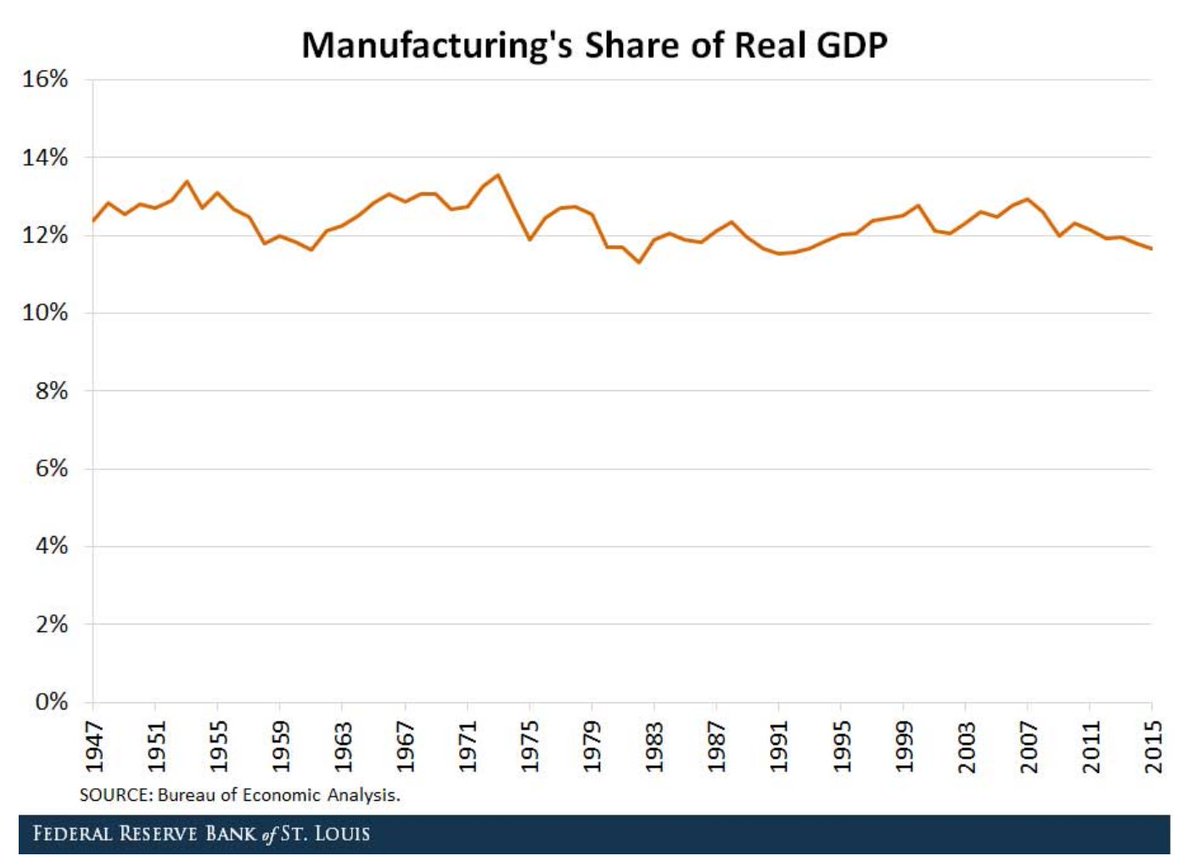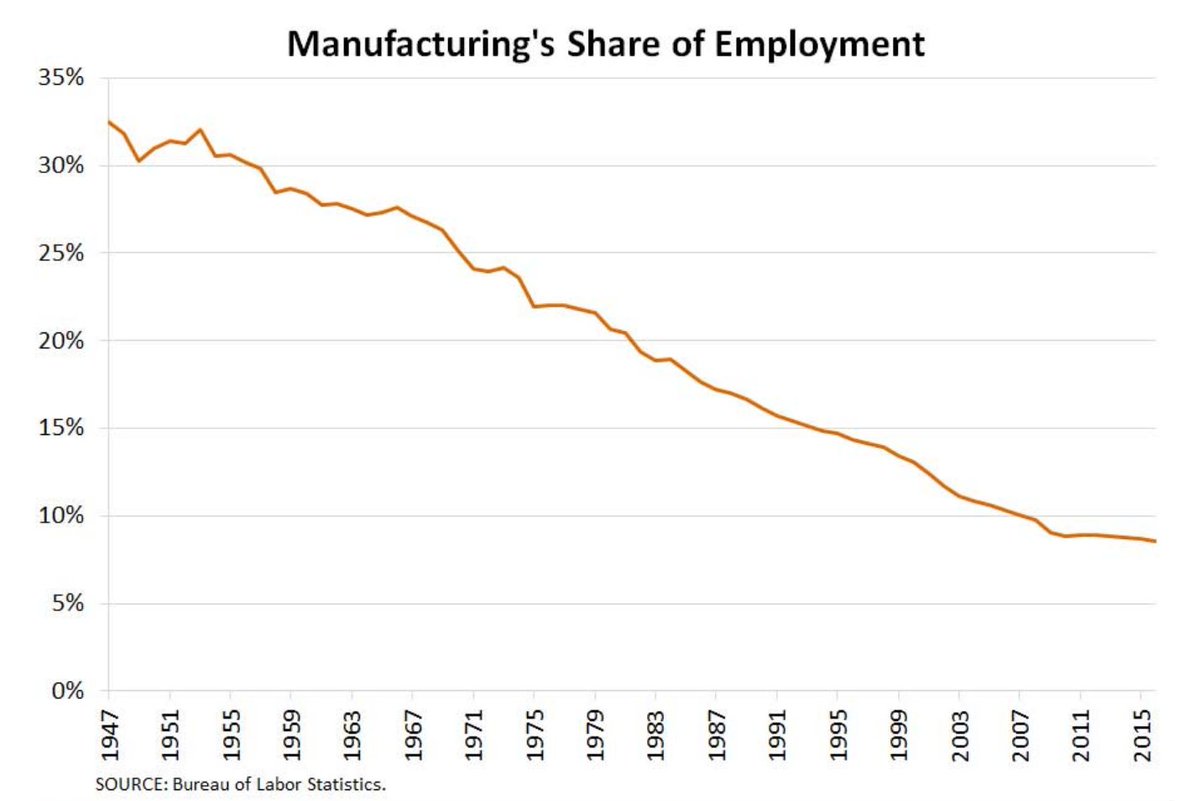The Biden admin is framing its trade policy as pro-manufacturing and pro-worker.
But a pro-manufacturing trade policy is not necessarily pro-worker and a pro-worker trade policy is not necessarily manufacturing-oriented.
A thread on trade, workers, and @Disney's Frozen II. 1/
But a pro-manufacturing trade policy is not necessarily pro-worker and a pro-worker trade policy is not necessarily manufacturing-oriented.
A thread on trade, workers, and @Disney's Frozen II. 1/
The Biden Admin says that its trade policy is pro-worker. See article. Great! I agree with that. Virtually everyone agrees with that. The problem is that Biden’s trade-policy understanding of who trade-affected workers are is woefully out of date. 2/ https://www.nytimes.com/2021/02/11/magazine/biden-economy.html?action=click&module=Top%20Stories&pgtype=Homepage
It over-emphasizes manufacturing’s importance to the economy overall, over-emphasizes manufacturing’s decline, and over-believes in the manufacturing sector’s ability to re-create mass employment in the way that it did in the 30 years or so after WWII. 3/
First, it’s important to note that manufacturing has not had some horrible decline. As a % of real GDP, manufacturing is basically in the same place it has been for decades. Notice also that manufacturing has never been as central to GDP as the today’s nostalgia suggest. 4/
What has happened though is that manu employment is down, mostly due to automation. To the extent that trade has negatively affected manufacturing, it’s mostly been in labor-intensive industries like textiles and furniture. (evidence for this is a whole separate thread) 5/
For a variety of reasons (rising inequality, populism, Baby Boomers aging), there is a lot of nostalgia on the left and right for the halcyon days of the 1950s-1970s. Thus, we get Trump and then Biden both trying to cater to manufacturing as a symbolic economic aesthetic. 6/
But, since manufacturing has become so automated, that means that even if the Biden admin is successful at promoting manufacturing in the U.S., that’s mostly more work for robots, not people. 7/
Carrier is a good example of this. Trump bullied Carrier into staying in Indiana and gave it money to do so. It used that money to automate away the jobs that were supposedly ‘saved.’ Manufacturing stayed in the U.S., but that didn’t mean manufacturing jobs did. 8/
Conversely, if you really do want a more pro-worker trade policy, then you need to look outside manufacturing. Today there are lots and lots of workers who benefit from trade and who don’t work in a factory. They’re in tradeable and non-tradeable services. 9/
Here is where the movie Frozen II comes in. There’s a docuseries on @disneyplus called “Into the Unknown” about the making of Frozen II. In it, you’ll see lots of people, from directors @alittlejelee and Chris Buck on down, working their butts off to get that movie made. 10/
Those are American workers!! Each and every single one of them!! And Frozen II made almost a billion dollars overseas. That’s an export. Those workers are exporters, however underappreciated that may be. 11/
I’m a professor who teaches a lot of international students. That’s a service export. Higher education in America has a huge trade surplus in services. The same goes for pharmaceuticals, R&D generally, finance, on and on. We are a service export powerhouse. 12/
Perhaps even more important than the tradeable services, by making imports cheaper, trade liberalization- not protectionism- helps make things more affordable for the millions of Americans who work in non-tradeable services. Those people are workers too. 13/
Whether a worker cleans hotel rooms in Las Vegas, cuts hair in Bemidji, or is in construction in Atlanta, they probably find some combination of healthcare, childcare, college education, housing, or all of the above to be too expensive. And it stresses them out. 14/
Teachers, firefighters, secretaries, truckers, nurses, electricians and every other working-class service provider fit here too. And so do virtually all of the working poor. You help those people by helping them stretch their paycheck. 15/
The last thing these people in the working-class need is for manufacturing-preoccupied protectionism to make their washing machine, their car, and their home’s solar panels more expensive too. 16/
Do we need to do more to help the working class in America? Hell yes!! Beyond COVID recovery, we could start by tackling the four big costs: healthcare, childcare, housing, and college. Getting those affordable will do a lot for working Americans. 17/
And there are all kinds of policy ideas to help create more blue-collar jobs from a Green New Deal to more infrastructure investment to free community college and subsidized apprenticeships. Try a bunch of those! 18/
But a trade policy driven by an outdated understanding of who is a ‘real worker’ and what the workforce looks like is going to do more harm than good. Moreover, the very act of talking about workers in almost excessively blue-collar manufacturing terms is unhelpful. 19/
Who we define as a ‘real worker’ matters enormously. It determines who we feel pride in, who we identify with, and who the government acts on behalf of. By all means construct trade policy to help workers, but please do it with 2021’s workforce in mind, not 1978’s. End/

 Read on Twitter
Read on Twitter
